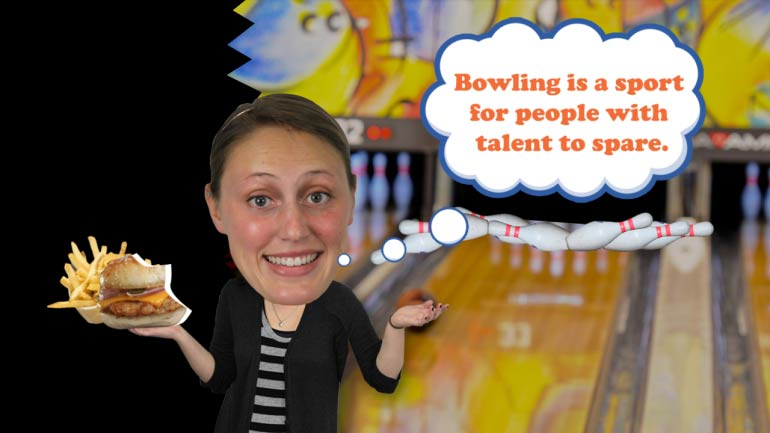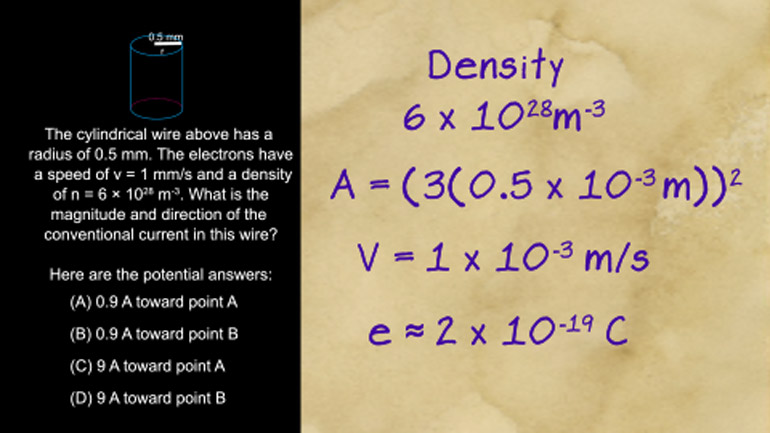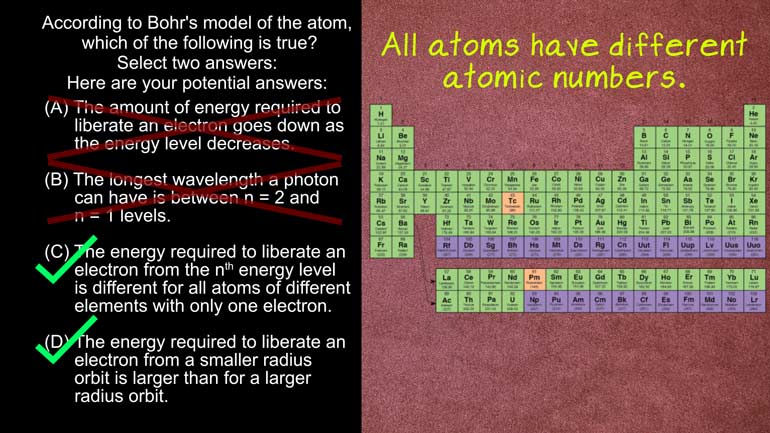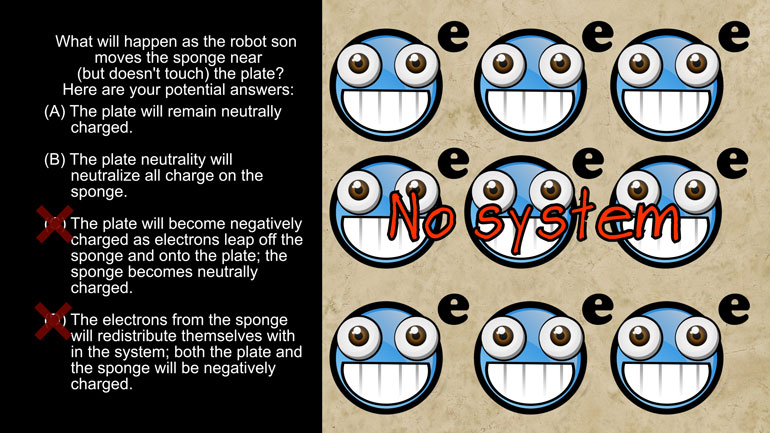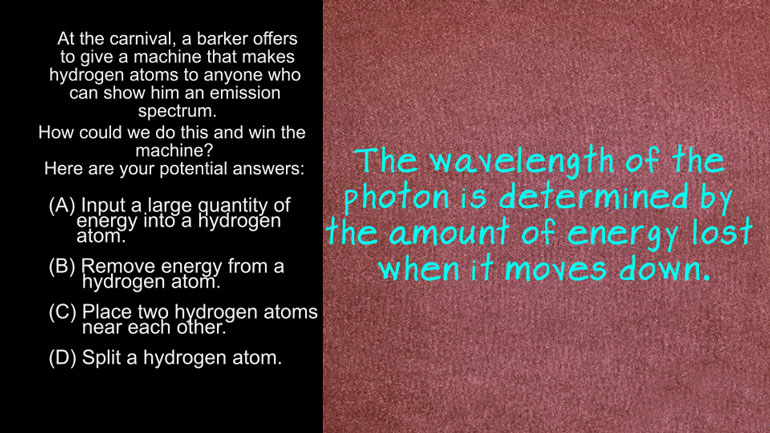ShmoopTube
Where Monty Python meets your 10th grade teacher.
Search Thousands of Shmoop Videos
AP Physics 2: 2.4 Systems Interactions and Changes 5 Views
Share It!
Description:
AP Physics 2: 2.4 Systems Interactions and Changes: Determine the radius R1.
Transcript
- 00:04
And here's your shmoop du jour brought to you by electrical
- 00:06
entertainment rumor has it that there are ways to be entertained that don't [man sitting on a couch watching television]
- 00:10
involve electricity but that involves scary things like activities that are
- 00:15
done outside ooh sounds gross we'll stick with cat videos all right, sparky
- 00:20
the shocker is the star electrical entertainer act of the 1730's parties [Sparky on stage holding a positive and negative balls]
Full Transcript
- 00:25
collected a charge of eight coulombs on a metal sphere of a radius R sub 1 he
- 00:30
has an out-of-town gig and wants to take some of the charge with him he connects
- 00:34
his sphere to another sphere with a thin conducting wire the second sphere has a
- 00:39
radius of 12 centimeters and its uncharged before the connection take a
- 00:43
look the following diagram right here now once the system has reached [diagram of two spheres]
- 00:47
equilibrium the charge on sphere 2 is fixed Coulomb determine the radius R of
- 00:52
the first sphere and here the potential answers... Okay well in the 1730's this was [woman using her mouth to throw a chair in the air]
- 00:58
cutting-edge entertainment never been so glad to not live in 1730's but we're sure
- 01:03
seeing electricity in action for the first time back then was well pretty mind [man staring at a blank TV screen]
- 01:07
blowing. When the two spheres reach equilibrium the surfaces of each will
- 01:11
have the same electric potential at a spheres surface and farther out the
- 01:16
electric potential will be equivalent to that of a point charge located at the [finger pointing to the center of a sphere]
- 01:20
center of the sphere well that potential equals the amount of charge over 4 pi
- 01:25
times the electric constant times the radius since we're dealing with the
- 01:29
system after the spheres have reached equilibrium, their voltage will be the
- 01:32
same and so we can set the voltage equations for each sphere as equal also [Two voltage equations for each sphere]
- 01:37
we can cancel out that hole 4 pi electric constant jibber-jabber and just
- 01:42
find that charge one over radius 1 equals charge 2 over radius 2 which
- 01:48
means that the radius of the first sphere equals the radius of the second
- 01:51
sphere multiplied by the first charge over the second charge now because a little
- 01:55
something called the law of conservation of charge we know that the total charge [law of conservation of charge drawn on a table]
- 01:59
in the system has to remain the same the total charge equals the charge on the
- 02:04
first sphere before there was any transfer we can use that second equation Q sub 1
- 02:09
equals Q sub t minus Q sub 2 in the equation we just
- 02:13
saw for the radius and then we can plug in our numbers our sub 1 equals 12
- 02:18
centimeters times 8 coulombs minus 6 coulombs over six coulombs and that means
- 02:23
the radius of the first sphere equals four centimeters so the correct answer [equation for the radius of a sphere]
- 02:27
is B.. and remember if you're going to be an electrical entertainer well be careful
- 02:32
you don't want the people to be entertained by your pain [Sparky being electrocuted on stage]
Up Next
Related Videos
AP Physics 2: 1.1 Properties of Objects and Systems. What is the magnitude and direction of the conventional current in this wire?
AP Physics 2: 1.5 Properties of Objects and Systems. According to the Bohr's model of the atom, which of the following are true?
AP Physics 2: 2.2 Properties of Objects and Systems. What will happen as the robot son moves the sponge near (but doesn't touch) the plate?
AP Physics 2: 2.4 Properties of Objects and Systems. How could you show the carnival barker an emission spectrum?
